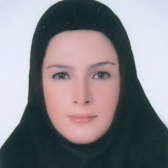International Journal of Intelligent Systems and Applications (IJISA)
IJISA Vol. 5, No. 9, 8 Aug. 2013
Cover page and Table of Contents: PDF (size: 583KB)
Artificial Intelligence Design Waterfronts and Particular Places Management to Improve Relationships between People
PDF (583KB), PP.58-66
Views: 0 Downloads: 0
Author(s)
Index Terms
Fuzzy Logic Theory, Waterfront, Traditional Community, Heritage Site, Striped Methodology, Healthy Community
Abstract
Tourist attraction was used to achieve a stable waterfront, while the fuzzy-logic added intelligence to the select strategy through an automatic selection of the tourist attraction coefficient. This paper examines the relationship between heritage sites, waterfronts, and relationships between people in present-day in urban culture. Urban waterfronts are important and special assets and that, when redeveloped, they often contribute to healthy traditional communities. Waterfronts can serve as a unifying force in a city or town and can be, and often are, a force for community enrichment. Further, vibrant communities are essential for environmental, economic and social advancement. There are several strategy specific principles as a way to improve of usage from particular places and waterfront city. Select and design the best strategy play important role to tourist attraction. Fuzzy logic inference system is used to select the best methodology and based on this research and fuzzy logic method, striped methodology is used to have a best performance.
Cite This Paper
Shekufe Mottaghi, Fatemeh Farhadi, Samira Dokohaki, Mohammad Mohsen Farhadi, "Artificial Intelligence Design Waterfronts and Particular Places Management to Improve Relationships between People", International Journal of Intelligent Systems and Applications(IJISA), vol.5, no.9, pp.58-66, 2013. DOI:10.5815/ijisa.2013.09.07
Reference
[1]Ando, Tadao. 1984. Tadao Ando: Buildings Projects Writings. New York: Rizzoli International Publications.
[2]Another Form of Intervention. Olivetti Showroom. ww.studiocleo.com/gallerie/scarpa/ olivetti.html.
[3]Answers.com. Ludwig Mies van der Rohe. www.answers.com/topic/ludwig-mies-van-derrohe.
[4]Art, Design and Visual Thinking. De Stijl. char.txa.cornell.edu/art/decart/destijl/decstijl.htm.
[5]Arts and Crafts Society. http:/lforum.arts-crafts.com/eve/forums/a/tpc/f/3086045532/ m/9371038772.
[6]Blue Trout Graphics. www.btrout.com/port/mondrian/para.jpg.
[7]BluPete. History of Nova Scotia. www.blupete.com/Hist/NovaScotiaBk1/PartS/Maps/halifax.gif.
[8]Breen, Ann, and Dick Rigby. 1996. The New Waterfront: A World Urban Success Story.London: Thames and Hudson.
[9]Canada Vacation Planner. Halifax Metro Area. www.nova-scotia-kanada.de/enlhalifax/index.html.
[10]Farr, Douglas. 2008. Sustainable Urbanism: Urban Design with Nature. New York: John Wiley & Sons Inc.
[11]Frederick, Matthew. 2007. 101 Things I Learned in Architecture School. Cambridge, Massachusetts: MIT Press.
[12]Google Earth. www.earth.google.com.
[13]Halifax Regional Municipality.www.halifax.ca/regionalplanning/lmages/HRMmaplg.jpg.Hayward, Catherine. 1984. L'lnvention du Pare. Paris: Graphite Editions.
[14]L. A. Zadeh, "Toward a theory of fuzzy information granulation and its centrality in human reasoning and fuzzy logic," Fuzzy Sets and Systems, Vol. 90, No. 2, pp. 111-127, 1997.
[15]L. Reznik, Fuzzy controllers: Butterworth-Heinemann, 1997.
[16]J. Zhou and P. Coiffet, "Fuzzy control of robots," IEE proceeding Control Theory and Applications, Vol. 147, No. 2, 2002, pp. 1357-1364.
[17]S. Banerjee and P. Y. Woo, "Fuzzy logic control of robot manipulator," Second IEEE conference on Control Applications, 2002, pp. 87-88.
[18]K. Kumbla, E. Tunstel and M. Jamshidi, "Soft computing for autonomous robotic systems," Computers and Electrical Engineering, Vol. 26, No. 1, pp. 5-32, 2000.
[19]C. C. Lee, "Fuzzy logic in control systems: fuzzy logic controller. I," IEEE Transactions on systems, man and cybernetics, Vol. 20, No. 2, pp. 404-418, 1990.
[20]R. J. Wai, R. Y. Duan, W. H. Wang and L. W. Liu, "Implementation of artificial intelligent control in single-link flexible robot arm," IEEE International Symposium on Computetional Intelligence in Robotics and Automation, 2003, pp. 1270-1275.
[21]R. J. Wai and M. C. Lee, "Intelligent optimal control of single-link flexible robot arm," IEEE Transactions on Industrial Electronics, Vol. 51, No. 1, pp. 201-220, 2004.


